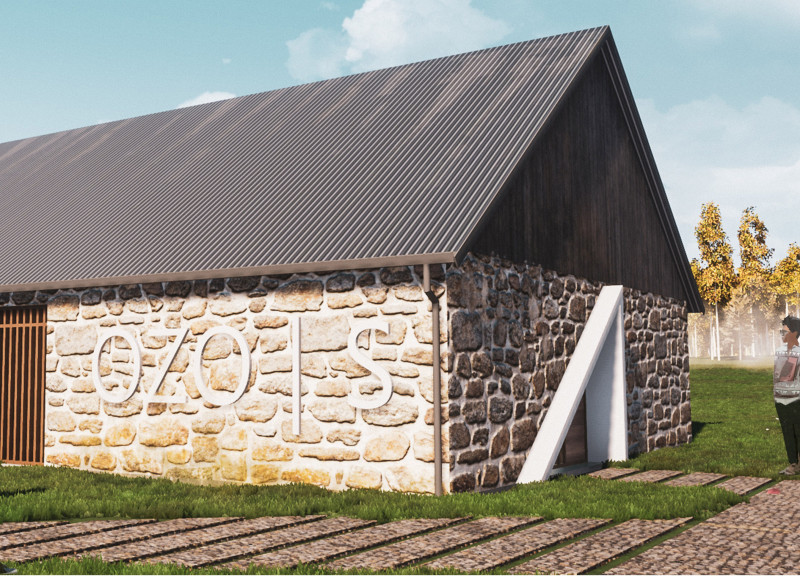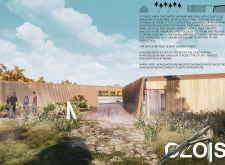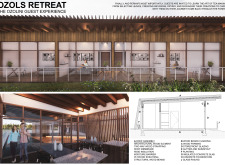5 key facts about this project
At its core, the project represents a sanctuary where visitors can escape the stresses of everyday life. The architecture thoughtfully integrates with the natural environment, highlighting the importance of creating spaces that promote well-being. It serves multiple functions, from hosting workshops and meditative activities to providing cozy accommodations for guests seeking respite. By incorporating elements that engage with the forest, such as walking paths and communal areas, the design encourages interaction both with nature and among guests.
Several key components define the architectural layout of the Ozols Retreat. The Welcome House serves as the main hub, welcoming guests and facilitating interaction. This structure features open and flexible spaces that can accommodate various activities, from workshops to communal dining. Its design includes expansive glass panels that facilitate natural light flow while offering views of the surrounding forest, creating an inviting atmosphere. The materiality of this building is particularly noteworthy; locally sourced heartwood, natural stone, and wooden elements create a tactile and warm environment that resonates with the retreat's ethos of sustainability and harmony with nature.
Adjacent to the Welcome House is the Tea House Retreat, designed specifically for relaxation and introspective practice. This area provides private guest rooms, each thoughtfully constructed to offer a peaceful retreat with direct views of the landscape. The architectural design of these spaces emphasizes comfort and serenity, ensuring that each room serves as a personal sanctuary.
The outdoor areas surrounding the buildings further enrich the guest experience. Carefully landscaped pathways guide visitors through the natural surroundings, encouraging exploration and connection with the landscape. Communal spaces equipped with fire pits and decks provide opportunities for gathering, fostering community among guests. These outdoor elements complete the experience by embodying the retreat's philosophy of integrating nature and community.
The architectural project utilizes several unique design approaches. One significant aspect is its focus on sustainability through the careful selection of materials. The use of local resources not only reduces the environmental footprint but also enhances the authenticity of the structures, allowing them to blend seamlessly with their environment. Additionally, the split roof design not only enhances the aesthetic appeal but also optimizes light and ventilation, merging sustainable practices with innovative architecture.
Overall, the Ozols Retreat offers a comprehensive framework for a retreat experience that prioritizes connection, comfort, and community. The architectural design reflects a commitment to blending functionality with a deep-seated respect for nature, making it a fitting example of how architecture can support wellness and self-exploration. For those interested in delving deeper into the project, exploring the architectural plans, sections, designs, and ideas will provide a more extensive understanding of the thoughtful considerations that have gone into crafting this retreat. Visitors are invited to experience the unique aspects of the Ozols Retreat and understand the profound impact of thoughtfully designed architecture in inspiring health and mindfulness.


























